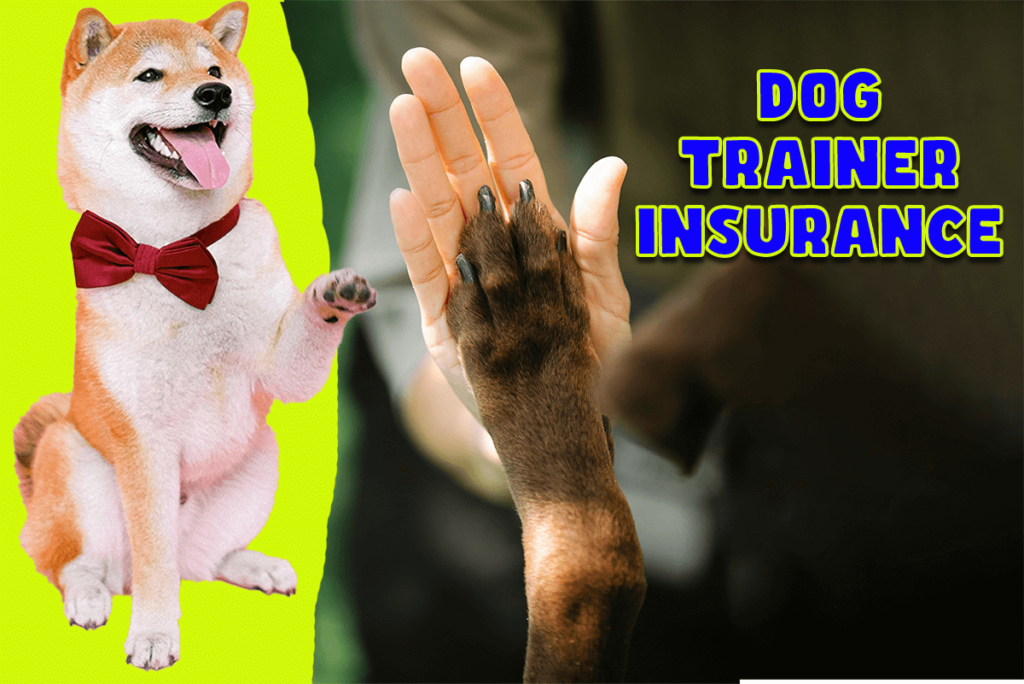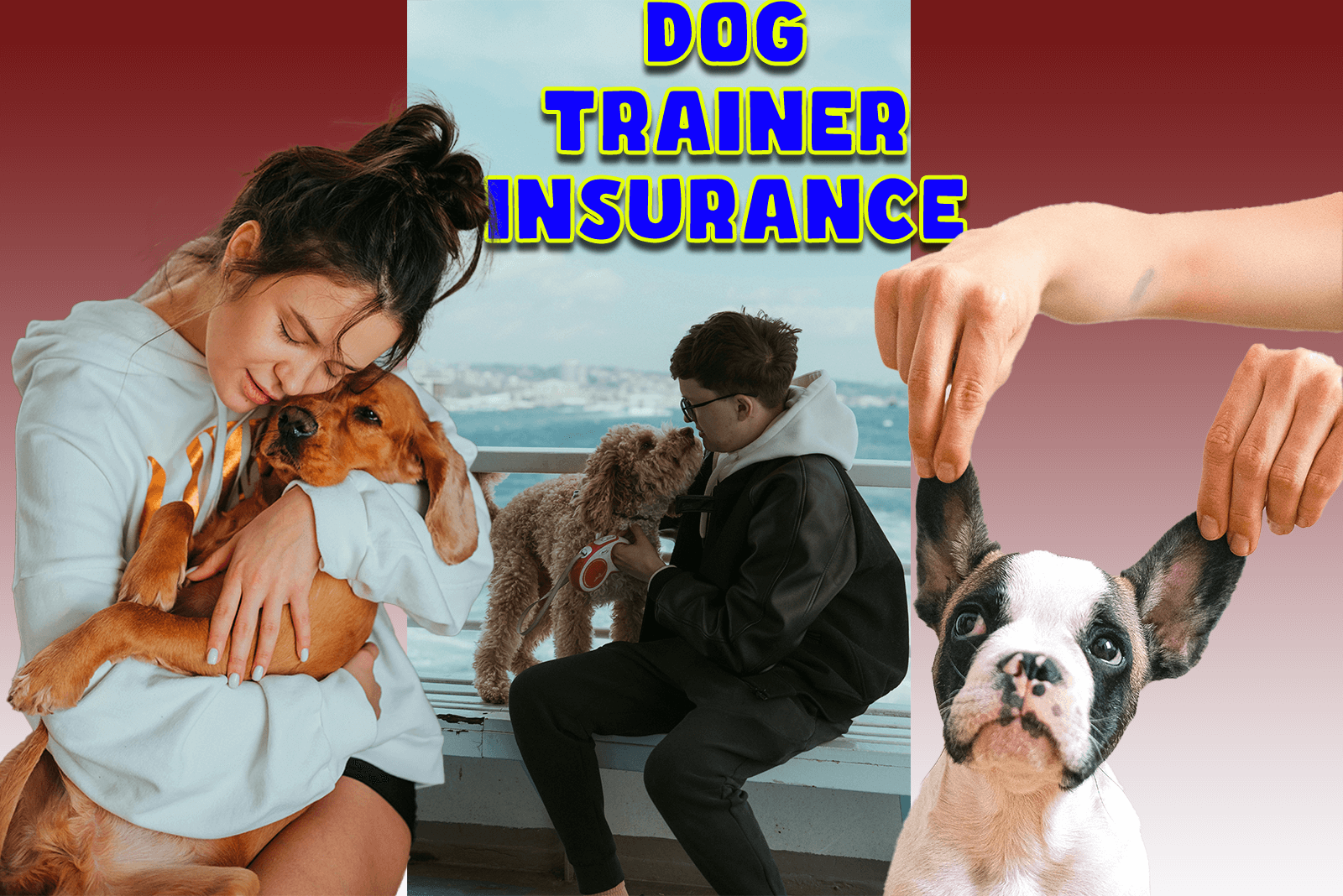Training dogs and dog trainers is no easy job! Your commitment to cultivating positive, healthy relationships between pet parents and their pups cannot be overstated. More Details about Dog Trainer Insurance.
Yet, along with its thrills and rewards comes an inherent set of risks—injury, accidents, or unexpected incidents can happen at any moment, creating legal and financial implications—which makes insurance for dog trainers essential!
Insurance policies designed for dog trainers aim to protect both you and the business against risks associated with training dogs, including property damages and third-party injuries, but it also offers coverage from errors made during handling, service lapses, or unexpected disruptions that might otherwise pose liability issues for you as the trainer.
Having all-encompassing policies to cover every need allows trainers to focus on doing what they love: training pups while helping their owners without fearing potential liability claims from clients or insurance carriers.

This guideline is meant to increase awareness about why dog trainer insurance is essential to working in this field. This article includes information on different types of insurance that typically are offered and their advantages, as well as how best to select an adequate policy according to individual demands—whether an experienced instructor or just starting out. Investing in appropriate coverage ensures longevity and growth within any job environment.
The Ultimate Guide to Dog Trainer Insurance
“The Ultimate Guide to Dog Trainer Insurance” is an indispensable companion designed specifically to offer expert dog trainers comprehensive protection in their businesses. This comprehensive overview covers every facet of insurance needed for dog trainers, such as liability issues due to pet bites or property damage lawsuits, which could have significant legal and financial ramifications.
This guide presents the essential types of insurance necessary for dog trainers, such as general liability, professional indemnity, worker’s compensation policies, and business interruption policies. Each coverage provides complete protection from unexpected events. Furthermore, this book also discusses benefits such as appropriate financial asset coverage that enhances reputation while continuing business operations – something no dog trainer should go without!
One of the key features of this guide is its advice for selecting an adequate insurance policy. Trainers can use it as an aid when it comes to selecting an optimal plan by considering their individual needs, comparing quotes among companies, and being aware of policy terms and restrictions before making their choice. Furthermore, this book lists reliable insurers specializing in covering dog trainers easily so they and their clients can quickly identify trustworthy options.
Canine trainers will find “The Ultimate Guide to Dog Trainer Insurance” an invaluable guide that allows them to confidently negotiate through all the complexities associated with insurance for themselves and their students and ensure their jobs continue without interruptions from risky situations or legal liability issues.
Why Every Dog Trainer Needs Insurance
Dog training can be immensely satisfying work, full of moments of happiness and satisfaction, yet comes with unique risks that could cause serious financial and legal ramifications. Here are several compelling arguments why every trainer needs insurance protection:
- Protection Against Liability
One key reason to have insurance is protection from liability lawsuits. Unforeseen events can happen to any dog, and if one you care for injures someone or damages property, you could be held accountable. General liability coverage provides medical costs, legal charges, and damages coverage, providing essential security.
- Coverage for Professional Errors
Even with all your best efforts in place, errors and omissions may occur during training sessions. Insurance covering Professional Liability or Errors and omissions covers claims due to incompetence, errors, or inadequate work, providing protection to both reputation and assets.
- Protect Your Business Assets
Equipment, training equipment, and facilities are invaluable assets that must be protected against vandalism, theft, and fire hazards so businesses can recover swiftly when unexpected events arise. Insurance policies on such items provide important peace of mind protection, helping companies recover swiftly after unexpected catastrophes strike.
- Workers’ Comp
For employers that offer workers’ comp insurance to their employees, workers’ comp is an indispensable safeguard against medical bills, and wages lost when an employee is injured on the job, protecting your business against costly lawsuits that might otherwise arise as well as complying with all relevant legal regulations and meeting compliance criteria.
- Prevent Business Interruptions
Natural disasters or health-related emergencies may unexpectedly disrupt your business operations, forcing it to close for extended periods. Business interruption insurance provides peace of mind by covering lost income and expenses when these interruptions occur and helping keep your business afloat in difficult periods.
- Enhancing professional credibility
Customers tend to trust trainers who display extreme accountability and dedication to protecting their rights. Comprehensive insurance plans increase customer trust significantly, increasing overall business credibility.
- Peace of Mind
Insurance provides peace of mind, allowing you to focus on what you excel in —training dogs or helping owners—without worrying about possible risk exposures or liabilities. Knowing you’re protected helps your business operate more confidently and successfully.
Top Dog Trainer Insurance Policies for Comprehensive Coverage
Finding an insurance policy that matches your company and clientele’s needs will provide peace of mind from various risks. Here is a selection of dog training insurance plans that offer complete protection.
- General Liability Insurance Coverage
Insurance Protection for Bodily Injury or Property Damage and Medical Bills. What you should know to defend against claims in case an exercise causes injury or property damage. Highlights This practice can help mitigate some of the most prevalent hazards involved with training dogs.
- Professional Liability Insurance (Errors & Omissions Coverage) Protection: Recover against negligence claims, errors, mistakes, or unsatisfactory work performance. Why You Need It: Your reputation and finances are at risk if an angry potential client alleges that an instruction provided failed or caused harm. Trainers offering training programs or services specialized for behavior modification must consider this aspect carefully.
- Property Insurance:
Coverage options include coverage against vandalism, theft, fire, and natural catastrophes. What steps should you take to protect the equipment, training facilities, and other assets vital to your business?
Features: These can be modified to protect specific valuable items like training tools or other equipment.
Highlights: Essential for working alongside assistants or employees. Business Interruption Coverage Insurance provides coverage against lost income and ongoing expenses caused by covered risks to businesses that are interrupted due to these interruptions. It provides coverage for immediate expenses and loss of profits due to interruption. Financial protection should provide peace of mind should something unplanned arise and interfere with business operations.
Highlights: Home insurance often provides complete security against potential threats to homes.
- Animal Bailee Coverage
Protection: This is provided when an injured or lost pet comes under your care and requires medical or legal expenses to recover them, including costs related to injury treatment and legal disputes. What You Should Know: Protect yourself against any risks of handling or caring for animals.
Highlights: Provide peace of mind to pet parents who entrust their pups with you.
- Commercial Auto insurance
Protection: Losses, liabilities, and injuries resulting from using vehicles for business-related purposes should always be included as risks in any comprehensive protection program.
What You Should Know | Why It Is Necessary: If your business involves transporting dogs or other items as part of its services.
Highlights: Expands the coverage for any commercial activities in which your vehicle may participate.
- Cyber Liability Insurance Cover Data Security breaches and cyber-attacks carry significant liabilities that must be mitigated or managed accordingly, what you should do to safeguard sensitive client and company data.
Highlights: Given our growing reliance on digital tools and client online interactions, this point becomes even more pertinent.
Navigating Risks in Dog Training
Training dogs is enjoyable and dangerous, and understanding its associated risks is imperative to guarantee their well-being and yours as a trainer. Here are a few methods to minimize and manage these risks effectively.
- Thorough Initial Assessments
What Is Important: Understanding a dog’s health history, behavior, and temperament before training will help prevent accidents or missteps during sessions.
Implementation steps: Conduct comprehensive intake assessments and use specific questionnaires to collect essential data from pet owners.
- Continuous Education and Certifications
Why it matters: Staying abreast with the most up-to-date training methodologies and industry standards will allow you to provide secure, cost-efficient instruction.
Method for Implementation: Engage in skillful continuous advancement through seminars or courses offered by respected organizations and secure certification from these bodies.
- Transparency between clients and service providers.
What Matters: Misunderstandings or lack of satisfaction may lead to frustration and even legal action against an entity.
How to implement: Outline clearly your training procedures, goals, pricing/rules, and written contracts/agreement signing.
- Upholding an Orderly Environment
Why it matters: Effectively overseeing a learning environment decreases the possibility of accidents, distractions, and accidents.
What to Do and Implement: Ensure training spaces are safe; use only safe, suitable equipment and try to minimize external stimulation as much as possible.
- Use of Appropriate Equipment and Techniques
Why it Matters: Misusing unsafe tools could result in injuries and legal liabilities for users and others.
What to Do and Implement: Invest in high-end equipment designed with humane features while staying up-to-date on effective training methods.
- Behavioral Management and Contingency Planning (BeCP)
Reasons dogs matter: Being unpredictable animals, planning to deal with unpredictability is paramount.
How to Implement: Implement procedures for dealing with violent or frightening behaviors, incorporating safe handling techniques and emergency plans.
- Develop Health and Safety Protocols.
What Is Important: Ensuring the dog’s and trainer’s physical health is paramount.
How to Implement: Adhere to hygiene standards, ensure all vaccinations are mandatory, and create First aid guidelines. Also, all participants must possess the physical ability necessary for participating in training activities.
- Insurance Coverage
Insurance coverage should be prioritized because it provides legal and financial protection from injuries, accidents, and other potentially risky scenarios.
What to Do: For optimal protection, purchase comprehensive insurance that includes general liability protection, property and contents coverage, and any relevant policies.
- Conduct Regular Risk Reviews
What’s Significant Regular risk analysis can help identify risks before they become issues.
How to Implement: Regularly assess your training practices, such as learning practices, procedures, and the environment, and make any necessary modifications or adaptations that reduce risks.
- Client Education and Involvement
Why it matters: Informing clients throughout their training increases the safety and efficiency of the program.
What to Do and Implement: Provide clients with guidelines, resources, and methods for reinforcing training within their homes. Encourage active participation while offering evaluation.
Choosing the Best Dog Trainer Insurance
Selecting an exceptional insurance policy and provider for dog trainers is paramount to safeguarding their business and personal assets. There are a few crucial points you need to remember when searching for insurance policies:
- Determine Your Coverage Needs
General Liability Insurance protects against injury to physical persons and property belonging to other people. Professional Liability Insurance, or Errors and Omissions (E&O) coverage, protects from claims brought about by mistakes that occur through professional error, such as mistakes due to negligent services provided.
Corporate Property Insurance: Protect your assets and equipment against theft or damage with Corporate Property Insurance. Worker’s compensation insurance protects employees in case they get hurt.
Animal Bailee Insurance: Covers any injuries or losses sustained while you hold onto someone else’s dog while it’s under your custody.
- Conduct Research on Reputable Insurance Providers. Search for companies that specialize in pet owner insurance policies. Use reviews and testimonies of other dog trainers as an indication of experience.
- Evaluate Your Coverage Options
Limits of Policy: Double-check that the limits on your policy are sufficient for the risks your business is exposed to.
Deductibles: Understand what impact deductibles will have on any out-of-pocket costs that arise when filing an insurance claim.
Exclusions: It is essential that you fully understand which components of the policy are excluded to avoid unintended gaps in coverage.
- Assess Cost and Value Request estimates from multiple businesses to compare costs effectively: Consider how valuable protection is offered compared to its cost.
- Evaluate Additional Services and Resources.
Search for companies offering extra services, like advice on risk management and legal assistance; helping with handling claims may also be important factors to consider.
- Confirm Licensing and Accreditation
Make sure the company you select is authorized by regulatory bodies pertinent to the location where you reside.
- Consider Flexibility and Customization Options
Locate a service that offers policies tailored to your company’s unique structure.
- Confirm Financial Stability
Examine an insurer’s financial strength and credit rating before signing on, as it will give you confidence that they can fulfill any future claims payments they might need to. Recommended Insurance Providers (RIP)
Here are a few insurance providers known for providing quality pet services:
Hartville Pet Insurance Group Customized policies tailored specifically for professional pet owners, such as dog trainers, are now available. Business Insurers of the Carolinas. Insurance plans are designed specifically to cater to dog trainers. It includes full liability protection. Pet Sitters Associates are well known for providing their clientele with cost-effective pet insurance plans and customized training solutions.
Insurance Canopy:
Pet business insurance includes coverage of various risks, such as general risk, qualified coverage, and liability protection, as well as additional options that might come up over time.
FAQ about Dog Trainer Insurance
- What is the definition of dog trainer insurance?
Answer: Insurance specifically tailored for dog trainers protects them from the dangers associated with their work. Policies typically cover general responsibility, skillful liability, and damages to property to provide financial security against legal actions and claims made against trainers.
- Am I really in need of dog trainer insurance coverage?
Answer: As a dog trainer, you interact with clients and pets on an almost daily basis, which brings with it many risks, such as dog biting, property damage, and injuries to yourself and clients. Dog trainer insurance covers legal and medical fees in case an incident occurs, protecting home assets and business investments from unnecessary liabilities.
- What coverage typically comprises dog trainer’s insurance plans?
Answer: An inclusive policy designed for dog trainers often covers General Liability Insurance and provides coverage against bodily injuries sustained by third parties and damage to their properties. Professional Liability Insurance (E&O) protects education practitioners against claims related to negligent or incorrect practice of education. Commercial Property Insurance: Protect your equipment used for training and other property you own from damage or theft with this form of coverage. Animal Bailee Indemnity: Gives peace of mind should your beloved canine become injured or lost.
- What are the costs involved with dog trainers’ insurance policies?
Answer: The cost of dog training insurance policies varies significantly based on several variables, including coverage limits and dimensions, the nature and dimensions of your company, geographical location, and claim history. On average, policies tend to cost between $1,000 and $1,500 annually, and multiple estimates are recommended to find one that provides outstanding value at a reasonable cost.
- What criteria should be used to select an adequate dog training insurance provider?
Answer: Select the ideal insurance provider. Consider what kind of coverage best suits your needs. Search for insurance providers with decades of experience providing coverage for pets. Assess various coverage options and policy restrictions. Consider both costs and benefits when choosing an insurance policy. Examine a service provider’s licenses and financial stability before consulting customer reviews to ascertain its credibility and services.
Answer these questions to fully comprehend the value of dog trainer insurance and make an educated choice when purchasing an appropriate policy.
Conclusion
Insurance for dog trainers can provide invaluable security. By investing in comprehensive coverage plans for their profession and protecting themselves against injuries to both body and property, as well as professional insurance claims, a dog trainer will have peace of mind knowing their financial security is guaranteed. They will be free to focus on training their passion with confidence, knowing both their personal and financial wealth are safe from risk.
Select the Most Appropriate Policy
Examine Your Coverage Needs Discover the various forms of coverage needed for your company’s needs.
Investigate Providers: Search for insurance firms specializing in pet health and offering competitive coverage plans.
Compare Plans: Before purchasing a plan, compare various plans by noting coverage limitations, exclusions, and costs.
Verifying Stability: Confirm that the business holds a secure financial standing and certifications from various authorities.
Dog trainer insurance will not only help manage risk and build client trust but also boost your professional standing and reputation among clients. Be sure to regularly review and adapt your policy according to changing organizational needs; having this protection means continuing to provide top-quality training while safeguarding income streams.

I’m a Canada, UAE, US, and UK-based writer and dog expert blogger. I spent over five years learning about dog food and grooming techniques. Additionally, I recommend avoiding and properly treating various physical problems in dogs. I am here to share my knowledge about good dog nutrition and care.

